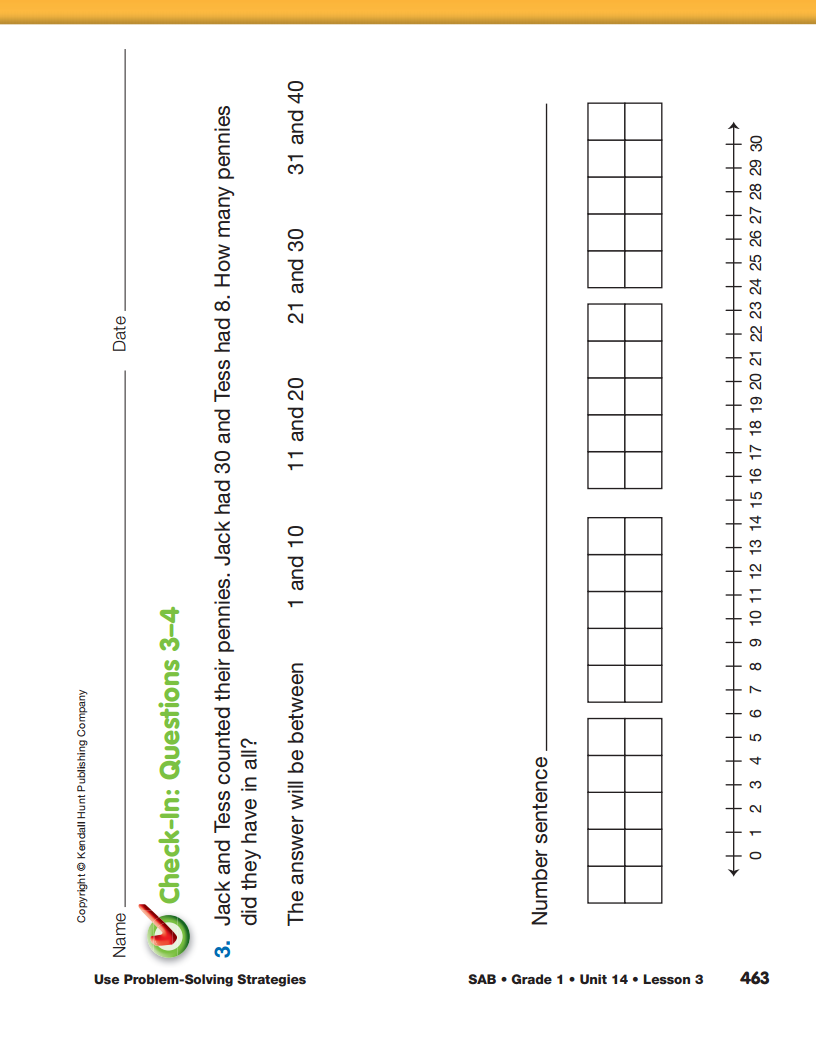Use the display of the Solve Problems with Larger
Numbers pages in the Student Activity Book to read
Questions 1–2 and discuss the strategies and tools
used to solve them. Focus students' attention on
Math Practice Expectation 3, Check for reasonableness,
on the display of the Math Practices page.
- How can you check to see if your answer is reasonable?
(Possible response: Estimate the interval
the answer may be within and compare the
calculation to the estimated interval.)
- How can you show that estimate in Questions 1–2?
(Possible response: Write down an estimate and
then compare the answer to the interval. Both
should be near each other.)
After reading each question, have students solve the
problem using whatever strategy they choose. Upon
completion, have them discuss strategies and tools
they used to solve the problem. Focus students'
attention on Math Practice Expectation 2, Find a
strategy: I choose good tools and an efficient strategy
for solving the problem.
- What tools were used to solve these problems?
(number line, ten frames, connecting cubes, number
sentences)
- What are the names of the different strategies
used? (Some possible responses: counting on,
Jimmy's strategy, counting up, make ten)
Assign Check-In: Questions 3–4 on the Solve
Problems with Larger Numbers pages in the Student
Activity Book to assess students' abilities to use
strategies and tools with larger numbers. Have connecting
cubes, 100 Charts, number lines, and ten
frames readily available.
Use Check-In: Questions 3–4 and the Feedback Box on the
Solve Problems with Larger Numbers pages in the Student
Activity Book to assess students' abilities to represent
addition problems and subtraction problems [E1]; use mental
math strategies to solve addition and subtraction problems
with larger numbers (e.g., 2 digit + 1 digit) [E4]; estimate
sums and differences using ten as a benchmark [E5]; know
the problem [MPE1]; find a strategy [MPE2]; check for
reasonableness [MPE3]; and show work [MPE5].


















